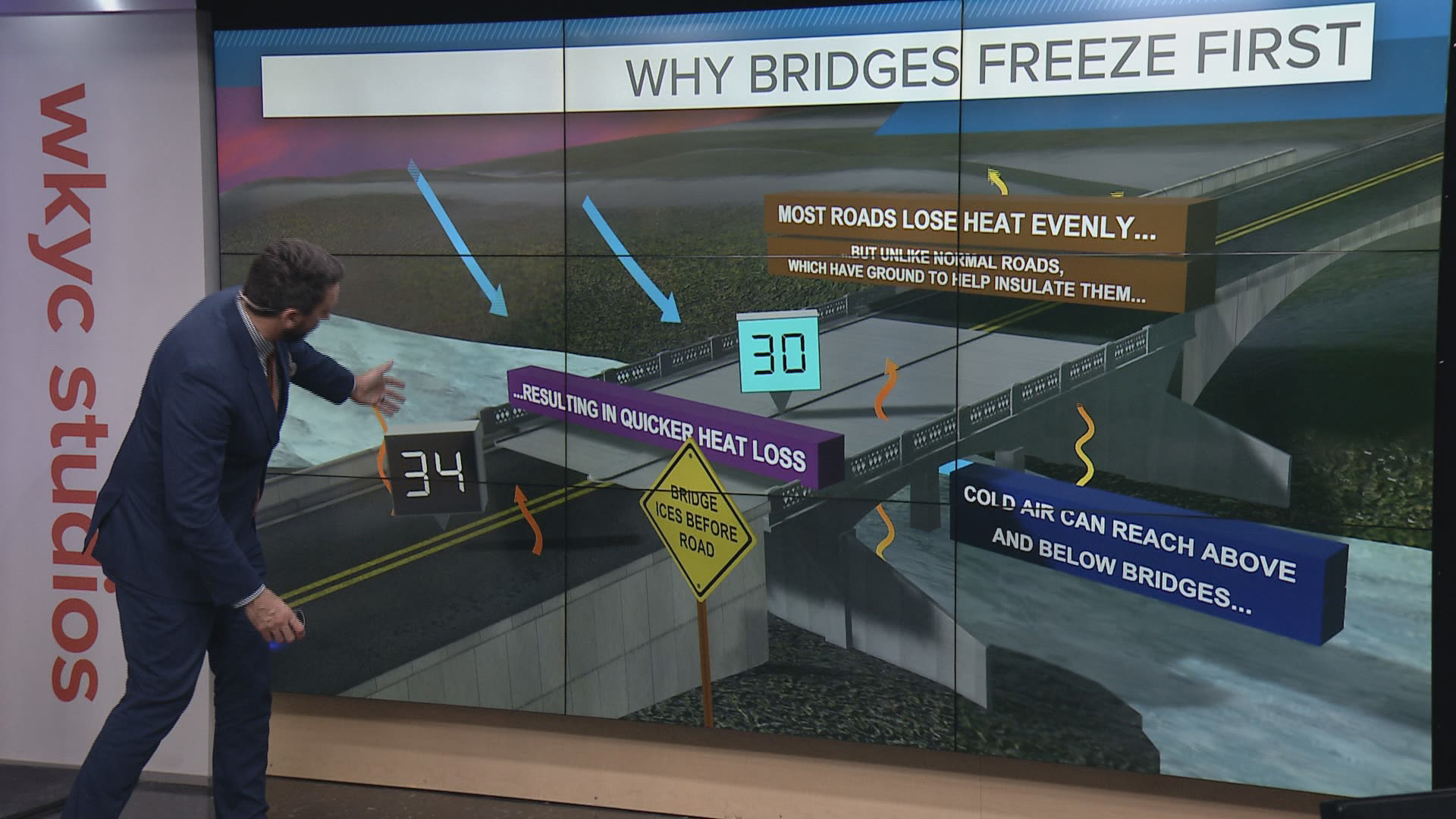CLEVELAND — You've likely seen the sign on interstates and roadways before approaching a bridge that says: "Bridge Freezes Before Road" -- and if you're familiar with winter weather driving here in Ohio, you probably know bridges can become quite slippery during the winter months.
But have you ever thought about why bridges can freeze faster? Let's dive into the details!
A typical roadway has ground underneath it, which helps to keep it insulated. As a result, the road temperature is usually close to, or even a few degrees above the actual air temperature.
Bridges, however, have open air underneath so there's nothing to keep it insulted.
Cold air is heavy and dense. It also likes to sink. When you have a bridge, the cold air tends to sink below it.
The result can be a road that is just fine with no ice to a bridge that has a much colder surface temperature and could certainly be icy. That's why it's important to take it slow on area bridges and elevated ramps this time of year!
Drive safe!

